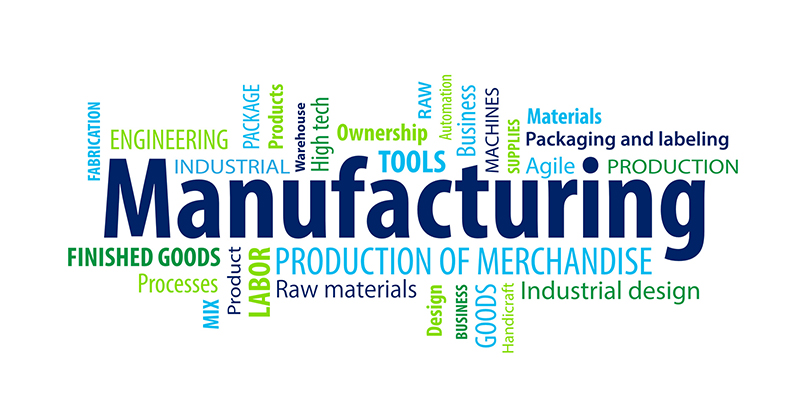Raw material prices are often a hot yet challenging topic for any machine shop in the manufacturing field. Chinese factory closures and the rapidly rising cost of raw materials in the manufacturing industries has proven to be a challenging combination for both producers, suppliers, and consumers.
On a broad level, there are two prime drivers of raw material costs. One is supplied and demand tightness, like most items, the law of demand and supply governs and controls the prices of raw material. When the supply and demand for a specific raw material gets tight, the costs of raw material significantly increase.
The other contributing factor to the rise of raw materials is the primary feedstock. The primary feedstock for most raw material manufacturing companies is natural gas, oil or metal. Although many CNC manufacturing companies apply the lean principles, raw material prices still pose a challenge especially for Denver manufacturing industries. Apart from primary feedstock and supply tightness, there are other small factors which massively contribute to the cost of raw material pricing.
Cost of labor
The cost of labor is another critical factor. Work is crucial as it influences the actual production rate. With the expansions of free trade agreements and the urgency of supply chain agility, labor cost is a factor to consider in determining your level of production. Free trade agreements have allowed for massive savings especially when you meet certain local sourcing minimums. Sometimes finding enough domestic labor to qualify for productivity is the hardest part of achieving this savings, making the prices of material go high.
Additionally, chasing low labor impacts the cost of production when it comes to consumer preferences, supply of raw materials and other considerations such as taxes and import and export duties. A shift in the workforce means a shift in raw material pricing.
When Labor Unions strike, a lot of time is wasted and energy lost, less production and transportation significantly affect the pricing of raw materials. Agreements reached by these unions such as salary increment, benefits, and allowances typically affect the pricing. Labor is thus a backbone of any thriving manufacturing company.
The dollar
A vast majority of raw materials use the dollar as their pricing mechanism for global trade since the US is regarded as the most stable economy worldwide. When the dollar rises, it means that most materials will become more expensive in other currencies.
There is always an inverse relationship between commodity prices and the value of the dollar. Since the dollar strengthened in 2014 to 2016, many commodities have become very expensive, and since then this trend has been witnessed up to now. This is because the dollar tends to be the most stable foreign exchange currency.
When it comes to international trade for raw materials, the dollar seems to be the ideal means of exchange. Another reason for the enormous influence of the dollar is that most raw materials such as oil and gas trade all over the world.
Climate change
Raw materials are needed every day in the daily activities of a factory or industry to push production. Even with the current technology today a lot of raw materials cannot be recycled or reused. This has a tremendous fundamental effect on the availability of raw materials. However, climate change influences the ease of transportation of these materials to the required destination. Natural disasters such as the Hurricane Harvey, floods and snow significantly affect transport.
When a place is affected by climate, it is difficult to get materials to their required destination and thus the little that is there means increasing the prices. It is often believed where there is lack of enough supply; the prices automatically go high.
Manufacturing is made difficult in this situation, and the cost of productivity goes high which eventually leads to increased pricing of raw materials. Climate greatly affects the efficiency of labor.
Raw materials prices back in 2017
Raw materials have seen severe price inflation in 2017 due to a variety of factors such as the strong number of markets. The overall price increased between 1 to 4 percent in sales. This significant increase was channeled by competition, high demand and various new markets in the manufacturing industries. As witnessed in this first half of the year, the prices are expected to go higher or remain constant.
Transportation
Every manufacturing industry requires efficient as well as cheap means of transport for both raw materials from the from the factory to the manufacturing industry and finished products from the original equipment manufacturer to the market.
The location of the machine shop should be strategic to ease transportation and for cheaper and adequate transport facilities at a more reasonable rate. If the industry is located at a place where transport would be difficult, the only alternative would be to hike the prices of the raw materials to balance the two rates.
The location of the manufacturing industry.
The location of the industry plays a significant role in the prices of raw materials. If the factory is located at a place where the supply of power, transport, and cost of labor is either unavailable or too expensive, the prices of raw materials in that particular area would most likely be high. Every industry requires fuel to run the machines. Alternative means of power such as hydroelectric, geothermal or coal may significantly affect the prices of raw material. Additionally, the closer you are to the market the easier it is to transport and yield any reasonable profit.
Supply and demand
The demand and supply are the key top drivers when discussing the cost of raw materials. It is a fundamental economic principle–the more an item is on demanded in any market, the costlier it becomes. If you are producing a product that requires diamond, your product will most likely cost less to manufacture. However, if many people are looking for the diamond, then the material will cost you a dime.
Unpredictable market
The world is a complicated place where things can change any time. Economic or political instability cause speculations which widely affects currency evaluation or other countries failure to contribute or invest in that particular country. Such actions can affect the pricing of raw materials, labor, and taxes.



